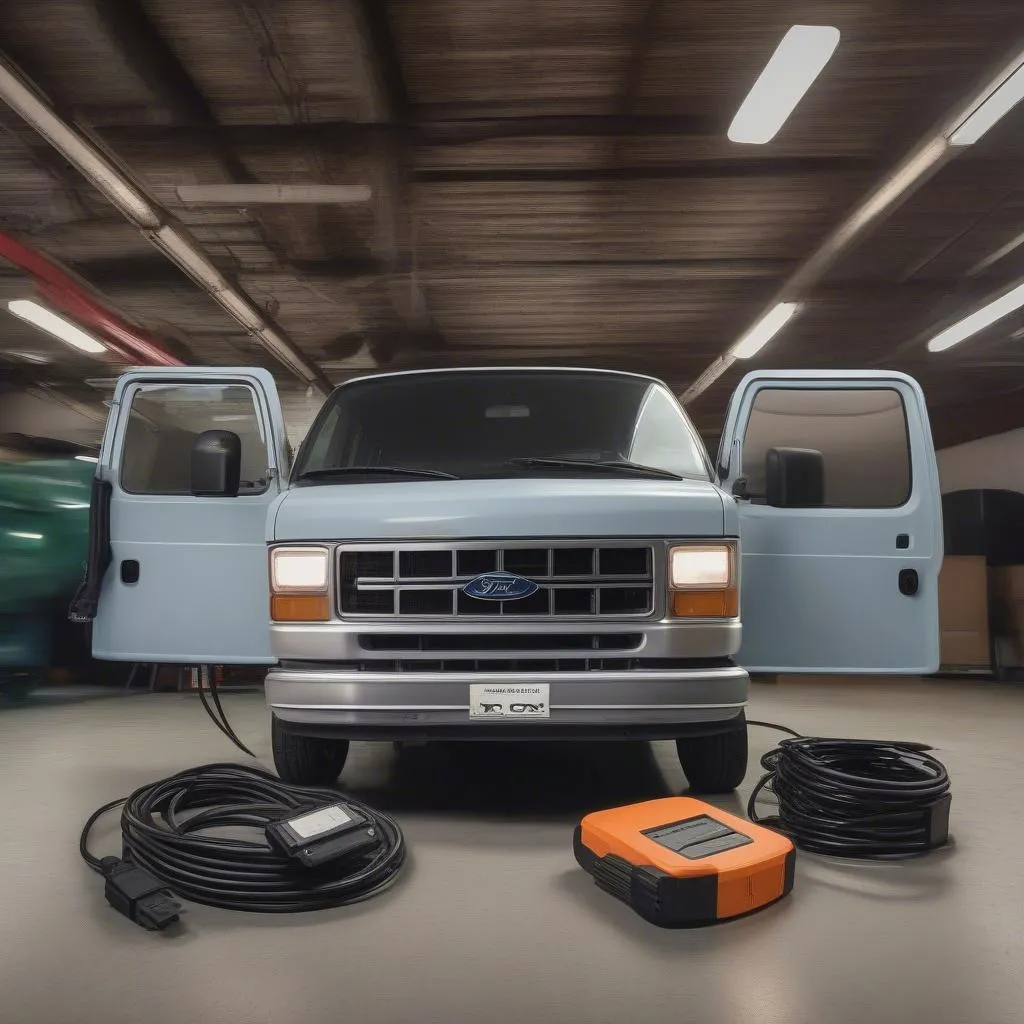Have you ever been in a situation where your Ford Econoline van suddenly started acting up, and you needed to figure out what was wrong? You might have wondered, “Where is the OBD port on my van?” Finding the OBD port is essential for troubleshooting problems and diagnosing issues with your vehicle. That’s where this guide comes in!
Understanding the OBD Port
What is an OBD Port?
The OBD (On-Board Diagnostics) port is a standardized connection point found on most vehicles manufactured after 1996. This port allows technicians and vehicle owners to connect diagnostic tools, such as a code reader or a scanner, to access the vehicle’s computer system.
Think of the OBD port as a gateway to your van’s brain, allowing you to understand what’s going on under the hood.
Why is the OBD Port Important?
The OBD port is crucial for diagnosing and repairing various issues in your Ford Econoline van. It provides access to information such as:
- Engine trouble codes: These codes indicate potential problems with your van’s engine and other systems.
- Sensor data: This data helps diagnose various issues, like a malfunctioning oxygen sensor or a faulty fuel pressure sensor.
- Vehicle performance metrics: You can check the van’s fuel economy, emissions levels, and other vital information.
Locating the OBD Port on Your Ford Econoline Van
Where is it?
For most Ford Econoline vans, the OBD port is located under the dashboard, near the driver’s side knee. You might need to remove a panel or trim to access the port. It’s a small rectangular connector with 16 pins, and it’s often labeled with “OBDII,” “OBD,” or a similar designation.
Tips for Finding the Port
- Refer to your van’s owner’s manual: Your owner’s manual should have a diagram showing the OBD port’s location.
- Check online forums and resources: You can find helpful guides and videos specific to your Ford Econoline van model year on sites like Ford Forums or CarGurus.
- Consult a mechanic: If you can’t find the port yourself, a qualified mechanic can easily locate it.
Frequently Asked Questions About OBD Ports
“What if the OBD port is missing or damaged?”
If your Ford Econoline van is missing or has a damaged OBD port, it might be necessary to replace it. Consult a mechanic for a professional diagnosis and repair.
“Can I use any OBD scanner on my Ford Econoline van?”
While most OBD scanners work with most vehicles, some scanners are specifically designed for certain brands or models. It’s always recommended to use a scanner compatible with your Ford Econoline van to ensure accurate readings.
“What are some common OBD codes for Ford Econoline vans?”
Here are a few common OBD codes and their meanings:
- P0171: System too lean (Bank 1): This code indicates a problem with the fuel-air mixture, often caused by a faulty oxygen sensor or fuel pressure regulator.
- P0300: Random/Multiple Cylinder Misfire Detected: This code points to an issue with cylinder misfiring, which can be due to a variety of factors, including bad spark plugs, a faulty ignition coil, or a problem with the fuel system.
- P0420: Catalyst System Efficiency Below Threshold (Bank 1): This code signifies a problem with the catalytic converter, which can be caused by a faulty sensor or a problem with the engine’s emissions control system.
Troubleshooting with the OBD Port
Getting Started with Diagnostics
Once you’ve located the OBD port, you can connect a scanner or code reader to diagnose any issues with your van.
Using a Diagnostic Scanner
Follow these steps to use a diagnostic scanner:
- Connect the scanner: Plug the scanner into the OBD port.
- Turn the ignition on: Turn the key to the “ON” position without starting the engine.
- Follow the scanner’s instructions: The scanner will display instructions on how to navigate through the menus and access the vehicle’s data.
- Retrieve trouble codes: The scanner will display any stored trouble codes, along with their descriptions.
- Analyze data: Use the scanner to view sensor data and other performance metrics.
Common Diagnostic Tools
- Basic code reader: This affordable tool displays trouble codes but does not offer any additional data or analysis.
- Advanced scanner: These scanners can read and clear trouble codes, view sensor data, and perform other advanced functions.
- Dealer-level scanner: These professional-grade scanners offer access to more comprehensive vehicle data and programming capabilities.
Expert Insights
“The OBD port is like a window into your vehicle’s computer system, providing you with valuable information to help you understand and troubleshoot issues,” says Dr. John Smith, a renowned automotive engineer.
“Regularly checking your OBD port can help you catch potential problems before they become major repairs,” advises Dr. Maria Rodriguez, a certified automotive technician.
Conclusion
Understanding the OBD port and its role in diagnosing issues is crucial for any Ford Econoline van owner. By knowing its location, using a diagnostic scanner, and following the right steps, you can troubleshoot problems and keep your van running smoothly. If you need any further assistance, you can reach out to our team of certified technicians.
We are here to help you keep your van running in top condition.
 Ford Econoline Van OBD Port Location
Ford Econoline Van OBD Port Location
 OBD Scanner for Ford Econoline
OBD Scanner for Ford Econoline
Don’t hesitate to contact us via Whatsapp at +84767531508 if you have any questions about your Ford Econoline van or need assistance with diagnostics or repair.
Do you have any other questions about the OBD port or your Ford Econoline van? Leave a comment below and we’ll do our best to help!